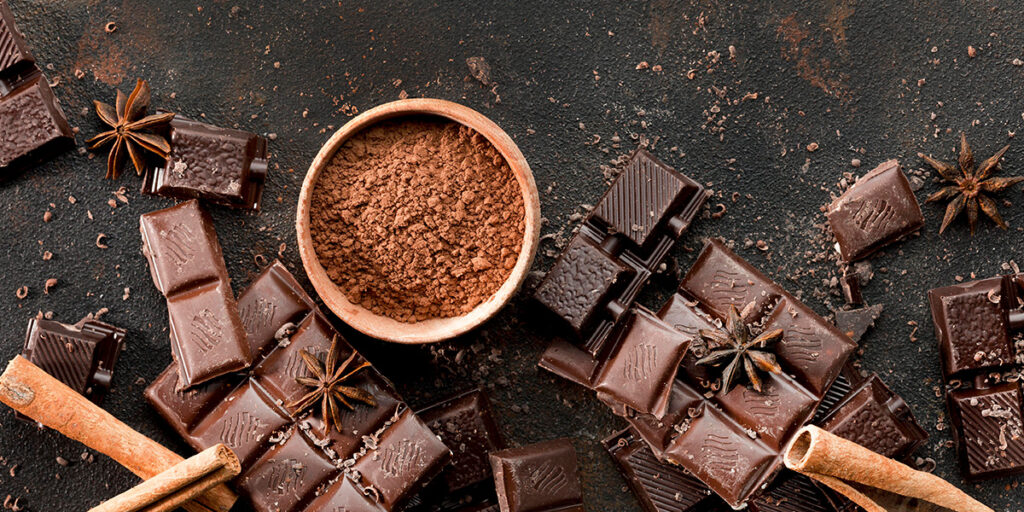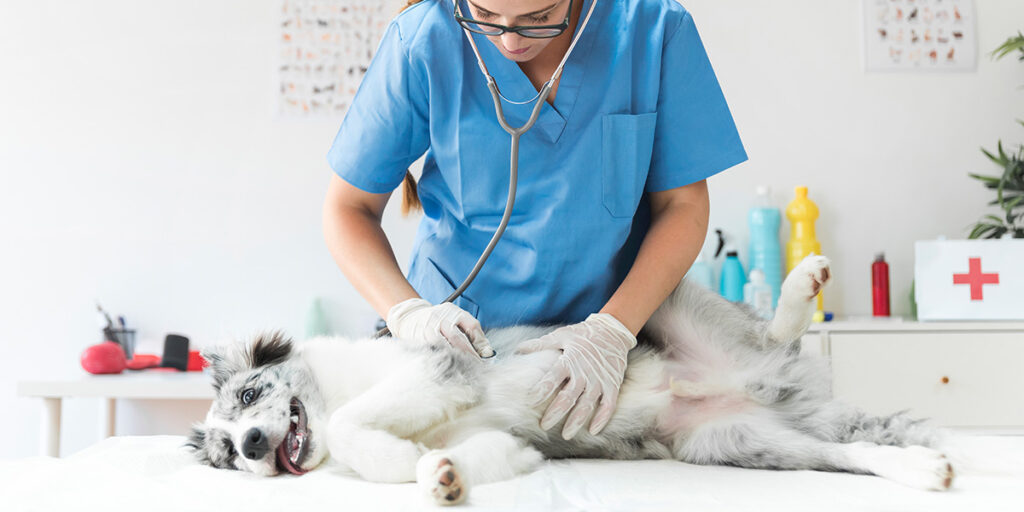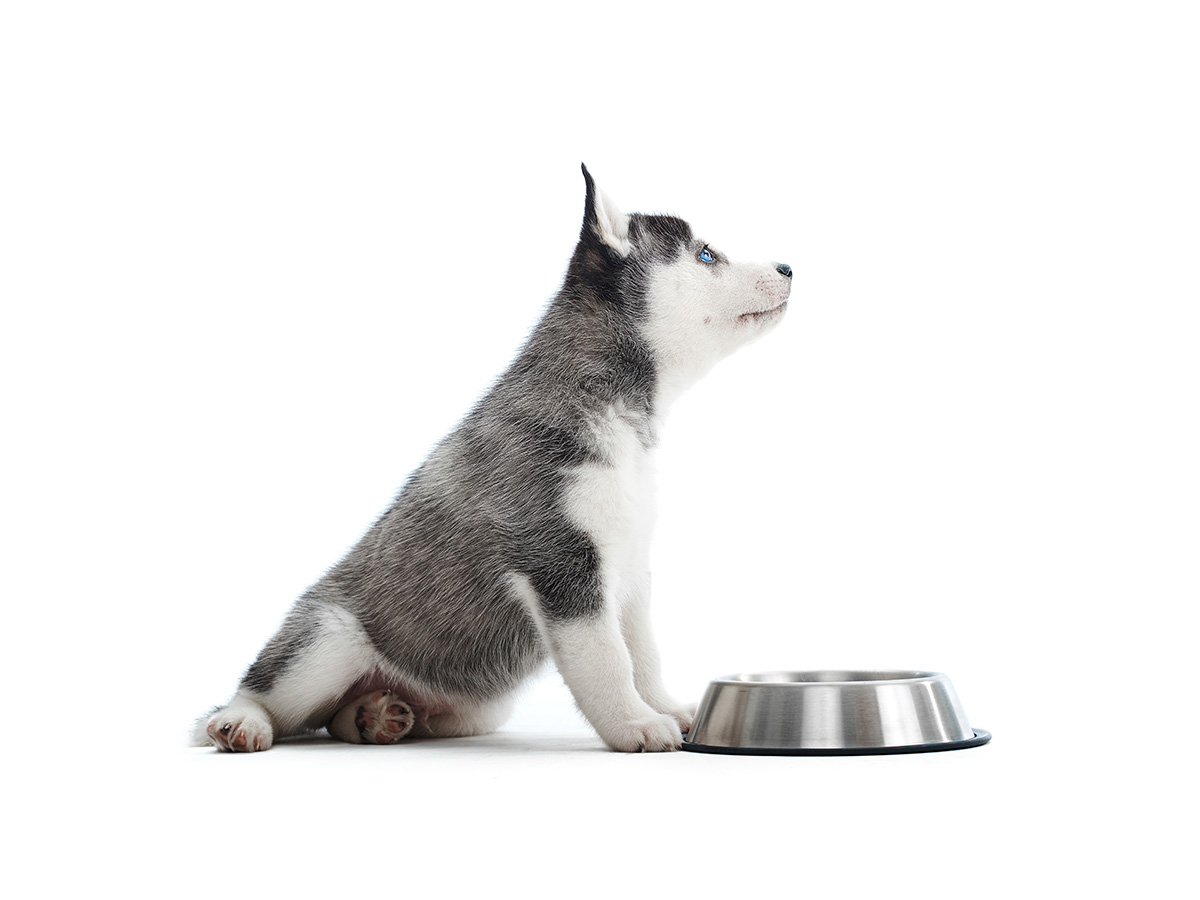Chocolate is a beloved treat amongst us humans. However, unlike us, dogs tolerate this irresistible sweet differently.
Are you wondering what will happen if your dog eats chocolate?
Perhaps you are extremely worried and want to know how much chocolate can kill a dog. What does science have to say?
This post will help you better understand why rewarding your dog with chocolate is a dangerous thing to do. Also, we will show you what you can do to prevent more significant health issues if your dog has already eaten a particular amount.
Let’s dive right in!
Table of Contents
What Makes Chocolate Toxic to Dogs?
Although it is a delicious product, chocolate has a few ingredients that are poisonous for our furry friends.
The Harmful Ingredients of Chocolate
Caffeine and theobromine stand out as the most harmful ingredients, and they are both found in cocoa beans. Since cocoa is the main issue for dogs, it is only natural that the “darker” the chocolate, the more toxic it is for dogs.

What Makes Theobromine Dangerous?
The main thing your dog’s body cannot tolerate is the intake of theobromine. That is because dogs digest theobromine much slower than humans.
According to WebMD, a dog’s body retains half of the theobromine intake for about 17 hours! This means that it can take more than 24 hours for dogs to fully metabolize all theobromine they have ingested.
Caffeine is less harmful in that sense since the dog’s body expels half of the ingested caffeine in less than 5 hours.
Now compare this with the fact that an average dog needs about 9 hours to digest a regular meal.
Why Is Caffeine Harmful for Dogs?
In addition to theobromine, caffeine found in chocolate can negatively affect your dog’s health. It stimulates the nervous system and picks up the heart rate, which presents unnecessary stress for the dog’s body.
Are All Types of Chocolate Equal?
We are sure you are starting to realize the harmful effects of chocolate on dog’s health by now.
But that’s not all.
As we mentioned above, not all chocolates are the same according to the amount of theobromine. The most toxic are cooking chocolates and chocolates that contain cocoa.
Logic would have it here that white chocolate is almost harmless for our dogs since it contains so little theobromine. According to some sources, its content is negligible, but is that so?
Popular Types of Chocolate – How Poisonous Are They?

As you are aware, there are many different types of chocolate out there. Unfortunately, the higher the quality of the chocolate, the higher the presence of ingredients toxic for dogs (since it contains more cocoa).
Let’s take a look at the most popular types of chocolate and how harmful they are:
#1 – White Chocolate
White chocolate is the safest among all choices. This is because white chocolate contains a small amount of theobromine.
However, this fact doesn’t mean that you should give white chocolate to your dog as a treat! It can still disturb digestion, causing vomiting and diarrhea.
#2 – Milk Chocolate
The situation with milk chocolate is quite different. The average milk chocolate contains about 51mg of theobromine per 1 ounce, which is 200 times more than white chocolate!
#3 – Dark & baking (cooking) chocolate
On top of our list of undesirable chocolates is dark chocolate.
One ounce of dark (cooking) chocolate contains 130 to 450 mg of theobromine, making it one of the most harmful treats you could ever give to your dog.
Now, let’s look at some more numbers that will tell you exactly which amounts are dangerous and even how much chocolate can kill a dog.
How Much Chocolate Can Kill a Dog?

After crunching all the numbers, here is a simple guideline you can follow:
- About 1 ounce (28g) of baking chocolate or 9 ounces (255g) of milk chocolate could potentially kill a small-sized dog (11 pounds or 5kg).
- About 3 ounces (85g) of baking chocolate or 27 ounces (765g) of milk chocolate could potentially kill a medium-sized dog (27 pounds or 12kg).
- About 7 ounces (198g) of baking chocolate or 63 ounces (1.8kg) of milk chocolate could potentially kill a large-sized dog (66 pounds or 30kg).
White chocolate is still harmful, but the chances of it being lethal are very slim. A dog would have to eat more than 1kg of white chocolate per 1kg of body weight, which is hardly possible. For example, a small-sized dog would have to eat about 5kg of white chocolate for it to be potentially lethal.
If you are wondering how we got to these guidelines, here is a brief explanation and some more numbers you should know:
The substances toxic to your dog (theobromine and caffeine) are also called methylxanthines. These are the harmful amounts and the negative effects you can expect:
- moderate symptoms: 20-30mg of methylxanthines per 1kg of body weight;
- severe symptoms: 40-50mg of methylxanthines per 1kg of body weight;
- lethal doses: 100-500mg of methylxanthines per 1kg of body weight.
To find out how much theobromine your dog has ingested, you can follow this simple guide:
- white chocolate has 0.1mg of theobromine per 1g of chocolate;
- milk chocolate has 2mg of theobromine per 1g of chocolate;
- dark and baking chocolates have 14-15mg of theobromine per 1g of chocolate.
Of course, you would need to know the approximate amount of chocolate your dog has eaten. Still, without knowing that, all calculations would be pointless either way.
Now, let’s answer the big question:
What Will Happen If My Dog Eats Chocolate?

According to VetNow.com, 55% of dog owners admit that their dog has eaten chocolate at one point or another. So obviously, it is not a rare occurrence!
So, what are the consequences?
The consequences of eating chocolate depend on your dog’s physical constitution and breed. Based on the info we have provided in the previous section of the article, you can see that larger dogs can handle more chocolate.
However, there is a threshold for each dog. Depending on the amount of chocolate they have consumed, dogs suffer different “levels” of poisoning.
What Are the Symptoms & When Do They Occur?
Usually, the first symptoms appear after approximately 6 to 12 hours.
If your dog has eaten a small amount of chocolate, you can expect to see moderate symptoms:
- vomiting,
- diarrhea,
- panting and heavy breathing in general,
- pacing and anxiety.
If your dog has eaten a more considerable amount of chocolate for their body weight, severe symptoms may appear:
- improper heart function,
- increased blood pressure,
- shaking (tremors),
- or even complete collapse and seizures.
Once you notice the symptoms, don’t panic. Take the appropriate action.
What to Do if Your Dog Eats Chocolate?

Once again, stay as calm as possible. You need to be thinking clearly and make sure that the situation doesn’t escalate. Pay attention to your dog’s symptoms.
Without hesitation, seek the immediate intervention of your chosen vet. Take the dog for an examination, and make sure to bring the packaging of the chocolate your dog ate with you. This will make the vet’s job easier.
The vet will examine your dog and suggest the appropriate treatment. The sooner you take the dog for an examination, the faster your dog will recover.
There are no proven home remedies to reduce symptoms.
Most importantly, do not force your dog to vomit. Some common advice that can be very harmful is to try to give your dog hydrogen peroxide. It will not help – on the contrary, hydrogen peroxide can make the current condition even worse.
The veterinarian usually implements two proven methods in combating poisoning. These are mainly:
- excretion of gastric contents;
- use of detoxifiers.
Once the vet determines an alarming state of health, they will recommend using the catheter. Catheters are small tubes that expel toxins from the stomach.
The use of detoxifiers is now on the scene. The most proven detoxifier you know is activated charcoal. Its action will instantly stop the further spread of toxic substances.
The cost of detoxification ranges from around $250 to $500. Recovery from more critical conditions can go up to a few thousand dollars.
The typical recovery period takes about three days. This process is not easy and can be extremely difficult for your dog — all the more reasons to avoid chocolate at all costs.
What You Can Do To Prevent The Poisoning

We sincerely hope that you won’t intentionally feed your dog chocolate in any case after you have read everything so far. So let’s go over the three most effective steps to ensure that your dog doesn’t eat chocolate accidentally:
#1 – Determine the place where you put the chocolate.
First of all, you must be aware that your dog can probably find chocolate with a bit of effort in multiple places around the house.
For example, let it be a specific area in the kitchen or dining room. This will make it easier for you to know that chocolate is on the shelf and not sitting around on the coffee table within your dog’s reach.
Be sure to tell the other housemates to pay attention. This is especially important for children, as they are responsible for the dog’s health just as much as you are.
Bonus Tip: Leave a message on the specific shelf meant for chocolate. Let it be an interesting, memorable message which will help everyone in the house remember to put away the chocolate after eating.
#2 – Don’t skip the feeding routine.
When a dog is hungry, it is most often set in search of food. Therefore, feed your dog regularly and reduce the possibility of them sniffing around the kitchen.
Bonus Tip: If you don’t have a clearly organized dog feeding routine, we have prepared a simple plan for you. All you have to do is take a quick look at our article: How To Discipline a Dog. In less than a minute, you will get a quick and easy solution.
#3 – Teach your dog the basic commands.
By applying explicit commands such as leave it and stop, you can ensure your dog doesn’t get in troublesome situations. Disciplining your dog will reduce the possibility of exposure to undesirable circumstances.
Conclusion
Chocolate poisoning can be a very unpleasant experience, especially if you are a first-time dog owner. The most important thing is to seek help from your veterinarian as soon as possible.
Please remember: There is no such thing as good and healthy chocolate for your dog!
Now, we would like to hear your thoughts:
Which piece of information from this article did you find the most useful?
Let us hear your opinion by leaving a comment at the bottom right away!
Stay with us!
